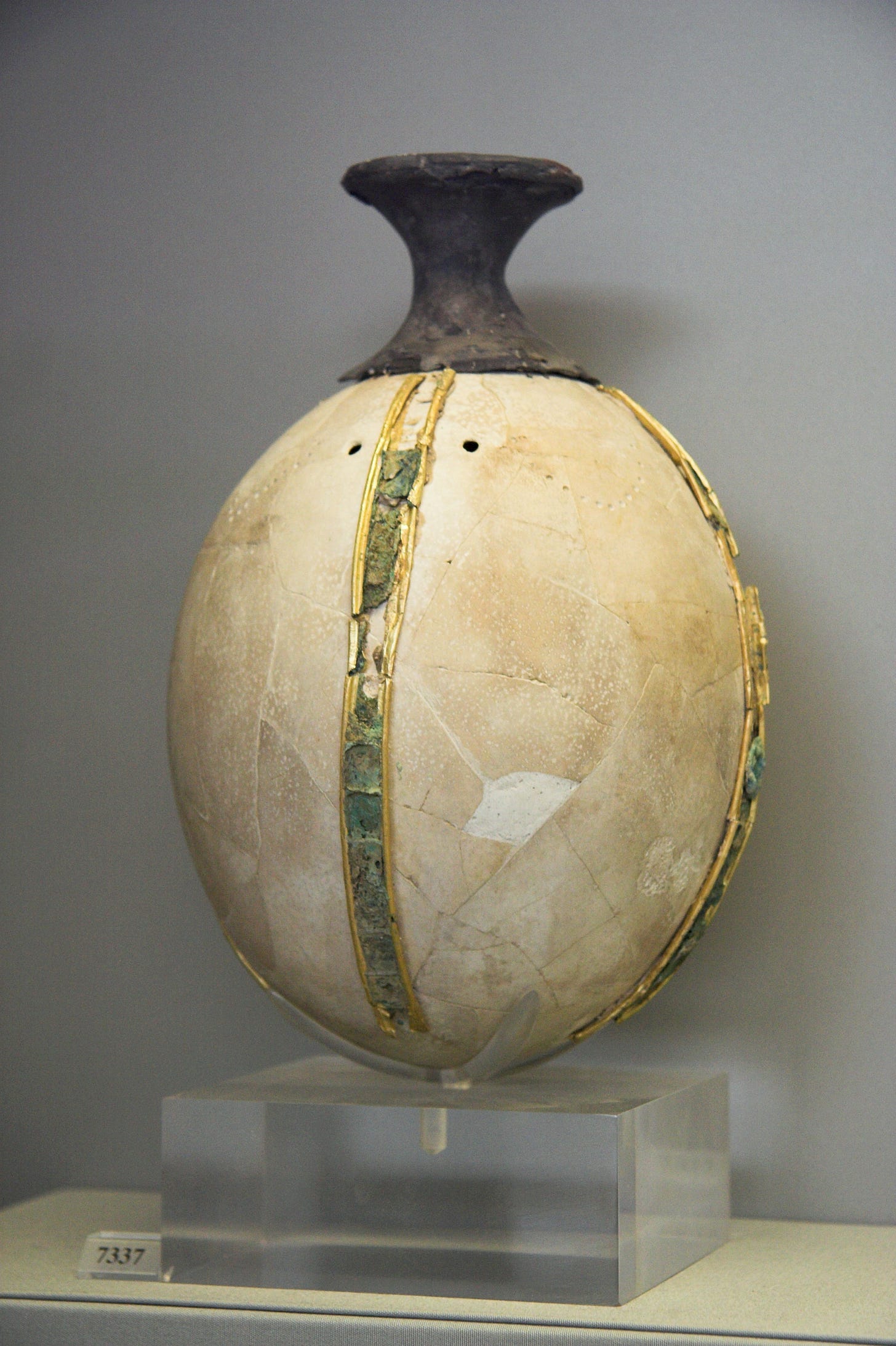The Story of their Irrational Canadian Government Death Sentence (in a nutshell)
Global Research, June 02, 2025
Region: Canada
Theme: Science and Medicine
Translate WebsiteShqipአማርኛالعربيةՀայերենAzərbaycan diliEuskaraБеларуская моваবাংলাBosanskiБългарскиCatalàCebuanoChichewa简体中文繁體中文CorsuHrvatskiČeštinaDanskNederlandsEnglishEestiFilipinoSuomiFrançaisქართულიDeutschΕλληνικάગુજરાતીKreyol ayisyenHarshen Hausaעִבְרִיתहिन्दीHmongMagyarÍslenskaIgboBahasa IndonesiaItaliano日本語Basa Jawaಕನ್ನಡҚазақ тіліភាសាខ្មែរ한국어كوردیКыргызчаພາສາລາວLatviešu valodaLietuvių kalbaМакедонски јазикMalagasyBahasa MelayuമലയാളംMalteseTe Reo MāoriमराठीМонголဗမာစာनेपालीNorsk bokmålپښتوفارسیPolskiPortuguêsਪੰਜਾਬੀRomânăРусскийSamoanСрпски језикSesothoShonaسنڌيසිංහලSlovenčinaSlovenščinaAfsoomaaliEspañolBasa SundaKiswahiliSvenskaТоҷикӣதமிழ்తెలుగుไทยTürkçeУкраїнськаاردوO‘zbekchaTiếng ViệtCymraegisiXhosaיידישYorùbáZulu
0

History
According to the fossil record, the ancient and majestic ostrich has lived on our planet for 120 million years – since the continents were shifting and dinosaurs roamed the earth.
Hebrew speakers once called the ostrich bath haya’anah (“daughter of the desert”), while Arabic speakers named it “the desert’s father”. In Sumeria, the ostrich was called gir-gid-da (“the long-legged bird”) or gam-gam (“the benefactor”).
To be sure, the ostrich has great dignity – indeed, a nobility of presence – and many people find visiting them to be a moving and memorable experience.
The ostrich egg is a three-pound wonder. Ostrich eggs were everywhere in the ancient world and have been found in the prehistoric tombs of Mycenae, Etruria, Latium, Carthage, and Egypt. Persians sent them as tribute to Chinese emperors. In Sumeria, near Bagdhad, the eggs were made into beautiful painted vessels.
.

The vessel of ostrich eggs, supplemented with gold, copper and others. Mycenae, Tholos. Late Bronze Age, circa 1400 BC. National Archaeological Museum of Athens.
.
As with the extraordinary immune system of the 400-million-year-old shark, the ostrich immune system has evolved to withstand the microbes it has encountered throughout millennia, and to rapidly dispense with new threats.
We have now learned from Japanese research going back to 2009 that the ostrich offers an enormous potential benefit to human health, yet very little of this fascinating knowledge has reached the Western media.
How Ostriches Support Human Immunity Is Easy to Understand
An antigen is a foreign substance such as a virus or a bacterium.
To conquer these substances, our white blood cells patrol the body, and when they encounter an antigen they produce antibodies which bind to it and neutralize it.
The good news is that if two antigens share similar structures (epitopes), an antibody produced against one can also eliminate the other. These are called “cross-reactive antibodies.”
Why cross-reactive antibodies are crucially important to human health has long been known:
An outbreak of influenza in 2009 was found to be caused by a novel strain of influenza virus designated as pandemic influenza A/H1N1 2009. Vaccination with recent seasonal influenza vaccines induced little or no cross-reactive antibody response to the pandemic influenza virus A/H1N1 2009 in any age group in human populations. Accordingly, most people had low immunity against this pathogen, thus resulting in the worldwide spread of the infection to produce a so-called ‘pandemic’.
This report presents the important finding that ostrich eggs generate cross-reactive antibodies to the pandemic influenza virus A/H1N1 following immunization of a female ostrich with a seasonal influenza vaccine. This simple method produced a large amount of antibodies against influenza viruses by one female ostrich…
In conclusion, cross-reactive neutralization antibodies against pandemic influenza virus A/H1N1 2009 were successfully generated in ostrich eggs produced by females immunized with seasonal influenza viral vaccine.
Ref. Yasuhiro Tsukamoto et al., “Ostrich produce cross-reactive neutralization antibodies against pandemic influenza virus A/H1N1 following immunization with a seasonal influenza vaccine,” Exp Ther Med. 2010 Dec 2;2(1):41–45.
Furthermore, the ancient immune system of the ostrich allows them to produce stable, heat-resistant antibodies in their egg yolks, effective against a wide variety of antigens, including:
- Viruses such as influenza, Covid-19, Ebola Virus, Zika Virus, and Dengue Virus
- Bacterial antigens such as Staphylococcus aureus, Escherichia coli, Pseudomonas aeruginosa, and Clostridium difficile.
The eggs are also used in neutralizing snake venoms, and for targeted immunotherapy in Type 1 diabetes.
On top of it all, ostriches are known for being able to produce antibodies very quickly when exposed to antigens.
.

From: Scientific Research
.
Key List of Human Benefits
Advantages
Ostrich antibodies are passed on to their eggs, which weigh three pounds or more, and contain a staggering number of antibodies – hundreds of times more than other common sources such as rabbits or chickens. Already, ostrich antiviral masks and nasal sprays have been created to protect human beings.
Ostrich antibodies are highly specific, stable (resistant to heat up to 100°C, which means they can live in the human body), and are cost-effective (2–4 grams per egg, up to 400 grams per ostrich annually). And lacking egg albumin, they are safe for people with egg allergies.
Applications: These antibodies are used in preventive products (masks, filters, nasal drops), cosmetics (anti-aging, acne treatment), diagnostics , and potential therapeutics (oral drugs, antivenoms, and cancer immunotherapy).
Ethical Advantage: Antibodies are harvested non-invasively from unfertilized eggs, aligning with animal welfare principles.
Safety and Regulatory Status: While ostrich antibodies are well-tolerated and non-toxic, most applications are in preclinical stages or limited clinical trials (e.g., COVID-19 nasal drops in Japan). They are not yet FDA-approved for widespread human therapeutic use, and are awaiting further safety and efficacy studies.
Ostrich Eggs: An unheralded health breakthrough
It is truly amazing that the world’s oldest and largest living bird can be so naturally supportive to human resistance against disease – and without harming the bird at all!
This is a breakthrough in the history of medicine. It is the biggest news on the communicable disease management front that I have encountered, both in my 25 years as a medical librarian, and during all my research since.
However, my excitement is tempered with the chilling knowledge that there are pharmaceutical interests who will suffer enormous financial losses if natural, unpatented solutions to infectious diseases become widely available.
A Visit to the Universal Ostrich Farm in Edgewood, British Columbia
On May 27, 2025, I was very fortunate to travel with a good friend to this remote ostrich farm in the West Kootenay region of British Columbia.
Ray McGinnis and I, both authors, were warmly welcomed by owners Karen, Dave, and Katie to the kitchen of this big, old farm with its nearly 400 calm and graceful ostriches – some over 30 years old. Several charming dogs were present. From these gracious people we learned a lot more.
.

From the Salmon Arm Observer, May 27, 2025. Mr. Anderson is trying to stop the cull.
.
In addition, much has been written about how the Canadian Food Inspection Agency (CFIA) is actively trying to slaughter (“cull”) these ostriches following the death of two birds in December, 2024, which were probably caused by transient wild ducks at a local pond.
Only the two dead birds were PCR-tested for bird flu (H5N1), but six months later the remaining 398 healthy birds are still slated – with unrelenting determination – for destruction.
Rather than viewing the main flock, healthy after six months, as having achieved herd immunity, the CFIA has elected to view the flock as if it were still December, 2024.
Ray and I had both listened to the judicial review of the CFIA’s history of action that was held in Vancouver in early May. We were astonished when on May 13th the federal judge allowed the CFIA to proceed with killing the healthy 398 birds as if they were poultry – when they are kept for research only and are not used for food.
The whole story of this baffling government over-reach and of the desperate efforts to save the birds has been carefully documented by the ostrich farm.
In spite of two of the birds having recently been shot (strangely, a big rooster was shot through the top of the head from a very large overhead drone), the owners have maintained a positive and respectful attitude to all concerned, including the CFIA.
At the same time, they are facing legal costs and can be supported with donations via their website.
Conclusion
Quite apart from the lives of these nearly 400 poised and stately birds, the extraordinary potential for natural, cost-effective human immunity is at stake here.
All the while there is an elephant in the room, which is the question, “Who would have the motivation to prevent naturally-sourced human immunity from rising to prominence in public health?”
And would such motivation be able to pull government strings?
.

Source, May 15, 2025
*
Click the share button below to email/forward this article. Follow us on Instagram and X and subscribe to our Telegram Channel. Feel free to repost Global Research articles with proper attribution.
Elizabeth Woodworth is highly engaged in climate change science and activism. She has published 42 articles on Global Research, is co-author of “Unprecedented Climate Mobilization”, “Unprecedented Crime: Climate Science Denial and Game Changers for Survival,” and co-producer of the COP21 video “A Climate Revolution For All.” She is author of the popular handbook on nuclear weapons activism, “What Can I Do?” and the novel, “The November Deep”. For 25 years, she served as head medical librarian for the BC Government. She holds a BA from Queen’s and a Library Sciences Degree from UBC. Visit the author’s blog here.
She is a regular contributor to Global Research.
Featured image is licensed under CC BY-SA 4.0
Global Research is a reader-funded media. We do not accept any funding from corporations or governments. Help us stay afloat. Click the image below to make a one-time or recurring donation.
Click this link for the original source of this article.
Author: brianpeckford
This content is courtesy of, and owned and copyrighted by, https://peckford42.wordpress.com and its author. This content is made available by use of the public RSS feed offered by the host site and is used for educational purposes only. If you are the author or represent the host site and would like this content removed now and in the future, please contact USSANews.com using the email address in the Contact page found in the website menu.







